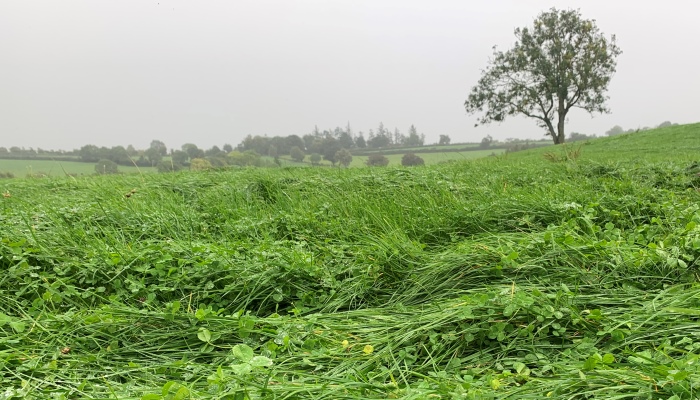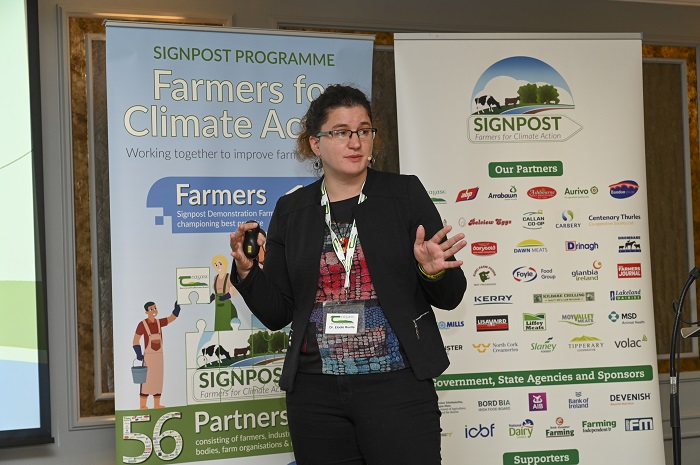26 November 2024
Adapting to climate change: More grass and more management

Ireland’s changing climate and the potential impacts it may have on grassland and crop production systems were discussed by Dr. Elodie Ruelle, Senior Research Officer in Teagasc Moorepark, at the recent convening of the Teagasc Signpost Conference and General Assembly.
As climate predictions are pointing to increased temperatures, and more winter and spring rainfall, Dr. Ruelle shared details of a modelling exercise which examined the possible implications of a 1.5oC and 3oC earth global warming on grass growth on a free-draining soil receiving a chemical nitrogen application of 225kg N/ha, split between six applications.
Using the MoSt Grass Growth model, Met Éireann’s TRANSLATE climate projection and comparing to historical grass growth data, the modelling exercise suggested that slightly higher grass growth rates could result. Compared to the historic grass yield of 12.4t DM/ha, annual grass yields of 12.9t DM/ha were predicted for the 1.5oC increase, whereas this increased to 13.5t DM/ha with the 3oC rise.
Although overall annual grass yield is predicted to slowly increase, Dr. Ruelle highlighted that quite a degree of variability could occur, noting that the seasonality of the growth will change with an increase in the winter and spring months and a decrease, due to water deficit and increased temperature, in the summer and autumn months especially for the east coast, with a big year to year variability.
As an example of this, she presented cumulative grass growth for each month. Of interest was the differences arising between the 1.5oC modelled result and historic data, with possible reductions in grass growth in the summer months – particularly in the July to September period in the east of the country – due to drier conditions, and additional grass growth over the winter months. This shift in seasonality, Dr. Ruelle explained, could result in April cumulative yields increasing by 400kg/ha, whereas yields in August could decrease by 400kg DM/ha.

Dr. Elodie Ruelle, Senior Research Officer in Teagasc Moorepark, addressing the Teagasc Signpost Conference and General Assembly. Photo: Tom Ryan Casey Photography
Along with variability in grass growth, Dr. Ruelle also highlighted the forecast increased recurrence of severe summer droughts, noting that these could move from a one in 15 year occurrence to a one in five. Additionally, the predicted variability between years was also cited as “one of the biggest challenges Irish farmers will face in the future”.
Additional management
To address this under a grassland scenario, climate adaptations will have to be implemented at farm level. Such measures highlighted by Dr. Ruelle included: carrying additional high quality silage stocks to support milk production in times where grass production may not meet herd demand; the further use of on-off grazing; the possibility of using multispecies swards, which are more stable during drought conditions; and an increased focus on matching stocking rate to grass production.
Dr. Ruelle also shared details of the AgriAdapt Project to delegates at the conference, commenting: “The goal of the AgriAdapt Project is to develop strategies for different sectors of Irish agriculture in order to adapt to climate change. Building resilience and flexibility in the system will be necessary. We need to find the solutions that are location and farm specific.”
Some of the planned initiatives of this project include the development of decision support tools to help with pest and disease prevention and grass growth challenges.
